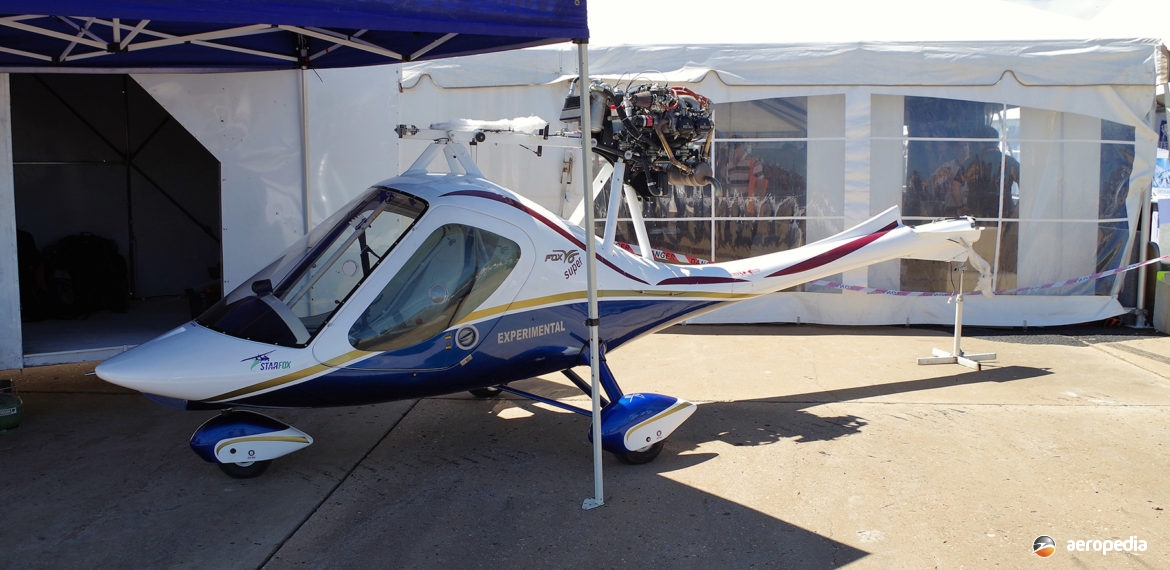Photograph:
First Australian V6 Super on display at an aviation event at Narromine, NSW (David C Eyre)
Country of origin:
Brazil
Description:
Two-seat light sport aircraft
Power Plant:
One 60 kw (80 hp) Rotax 912UL four-cylinder horizontally-opposed liquid-and-air-cooled engine
Specifications:
- Wingspan: 9.66 m (31 ft 7 in)
- Length: 6.5 m (21 ft 4 in)
- Height: 2.15 m (7 ft 1 in)
- Wing area: 14.9 m² (160 sq ft)
- Max cruising speed at 85% power: 161 km/h (100 mph)
- Cruising speed: 137 km/h (85 mph)
- Stalling speed with 45 degrees flaps: 61 km/h (38 mph)
- Stalling speed no flaps: 65 km/h (40 mph)
- Rate of climb: 106 km/h (66 mph)
- Rate of climb: 305 m/min (1,000 ft/min)
- Best glide ratio: 13:1
- Best gliding speed: 105 km/h (66 mph)
- Service ceiling: 3,048 m (10,000 ft)
- Range: 796 km (495 miles)
- Take-off run: 100 m (328 ft)
- Fuel capacity: 80 litres (17.6 Imp gals)
- Empty weight: 270 kg (595 lb)
- Payload with full fuel: 174 kg (384 lb)
- Payload with half fuel: 202 kg (445 lb)
- Loaded weight: 500 kg (1,102 lb)
History:
Built in Brazil in South America, the Starfox V6 Super was one of a number of light aircraft produced for the light aircraft market by Starfox. More than 2,300 examples are said to have been built. Five models of the basic design have been produced from the Fox V8 LSA down to the Fox V5 Super, the two main models available to the Australian market being the V8 and V5, but the Australian, New Zealand and South Pacific distributor, Starfox Australia of Wallsend, NSW, has stated other models in the range are available as ready-to-fly aircraft, or as a 90 per cent unit without engine and instruments ready to take either the Rotax 912 or 582 engine.
The aircraft were constructed by Starfox Industria Aeronautica. The V8 and V6 were designed, developed and built to meet United States LSA standards for a safe, fast comfortable light aircraft for long and medium cross-country trips. It was a high wing aircraft, the wings built of an aluminium tubular structure, the cockpit being built of laminated high-resistant fibreglass. The wings, tail and fuselage were constructed of 2024T3 aluminium plate fixed with solid rivets. Power was usually provided by the Rotax 912 engine. Further variants have included a model of the V5 with side-by-side seating or two in tandem; an amphibious model with floats; and one designed for agricultural spraying work.
First example in Australia was a V6 Super in May 2016, being a demonstrator for the importer, the aircraft being completed and test flown in Brazil before being dis-assembled and shipped. It became 23-6808 registered with Recreation Avition Australia (RAA). Other models developed include the V5 Tandem, V6 Super LSA, V6 Super Light and the V8 LSA.

